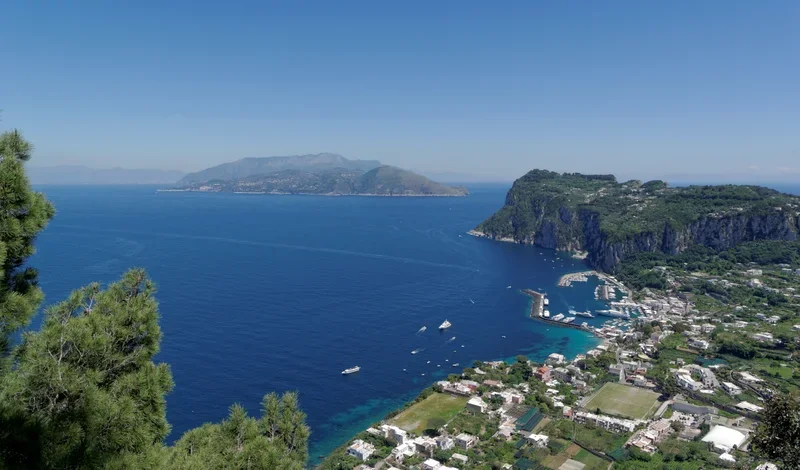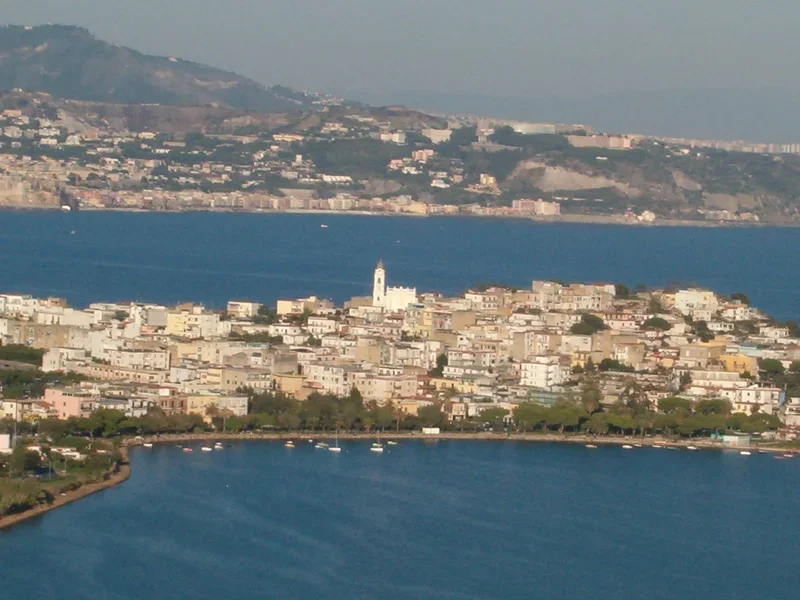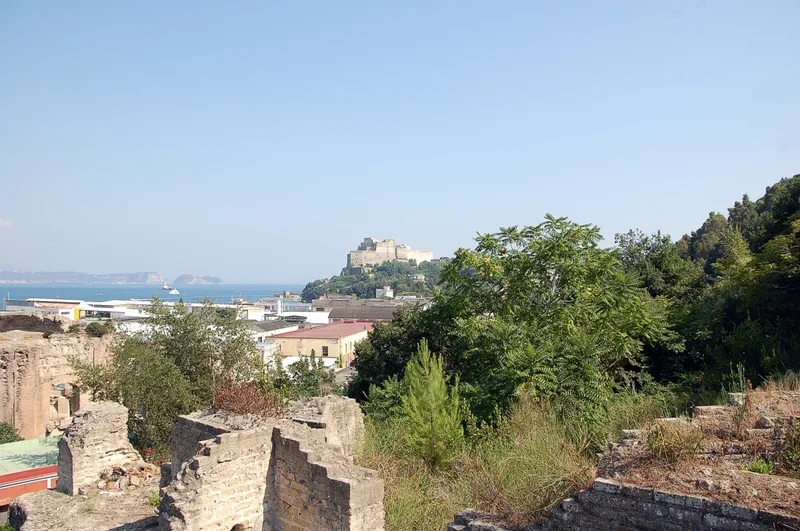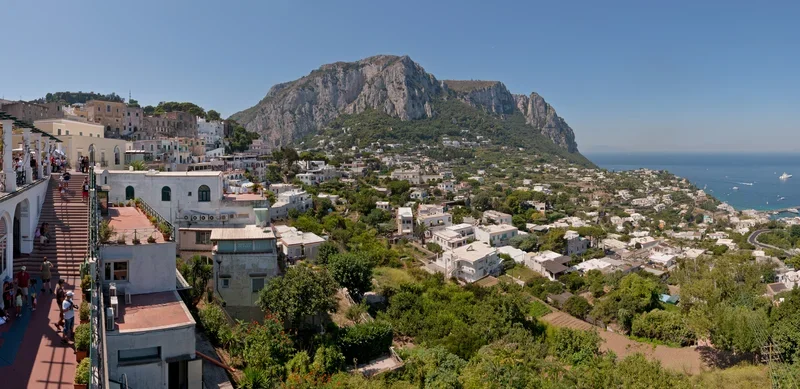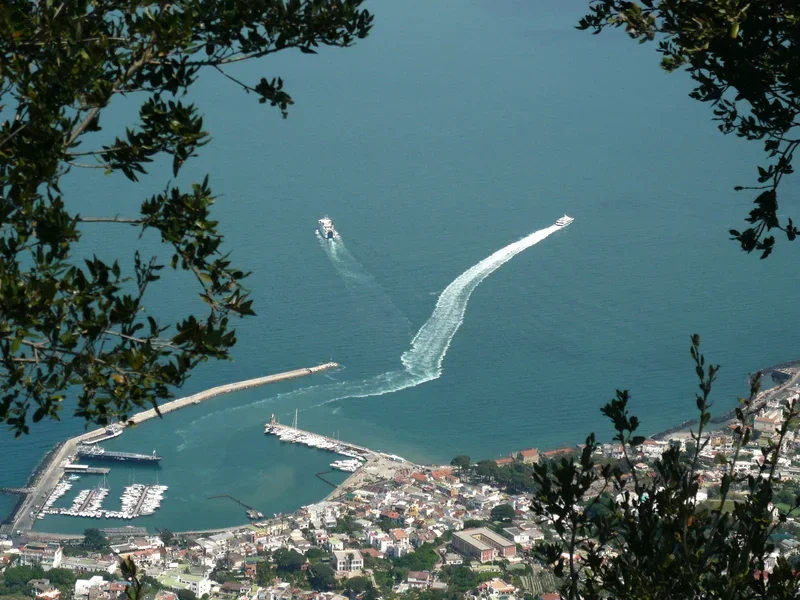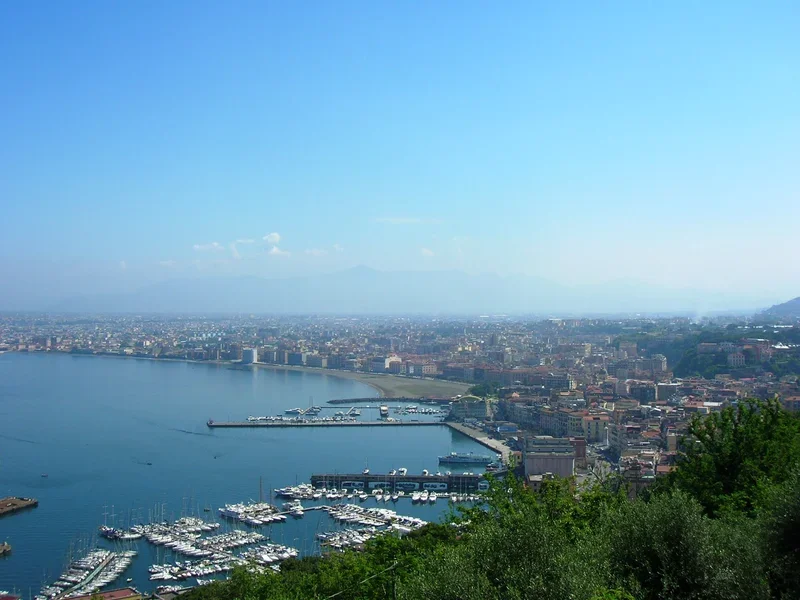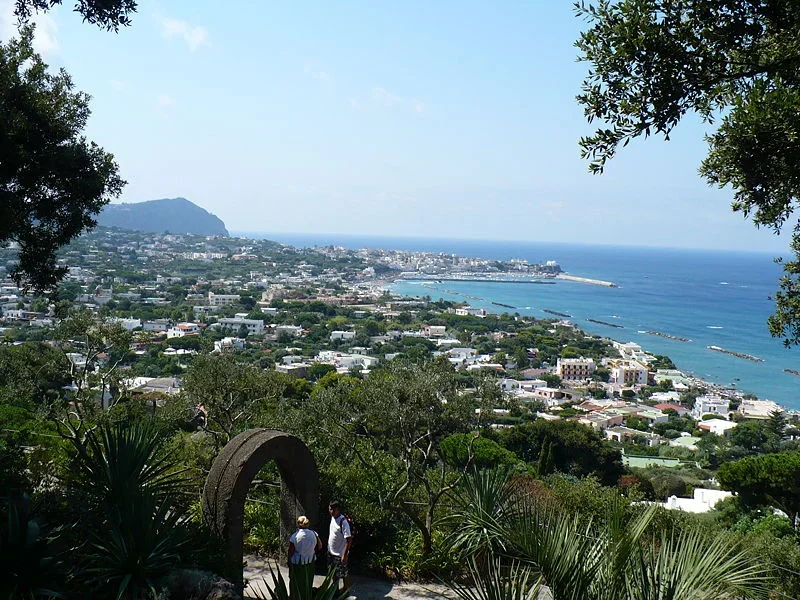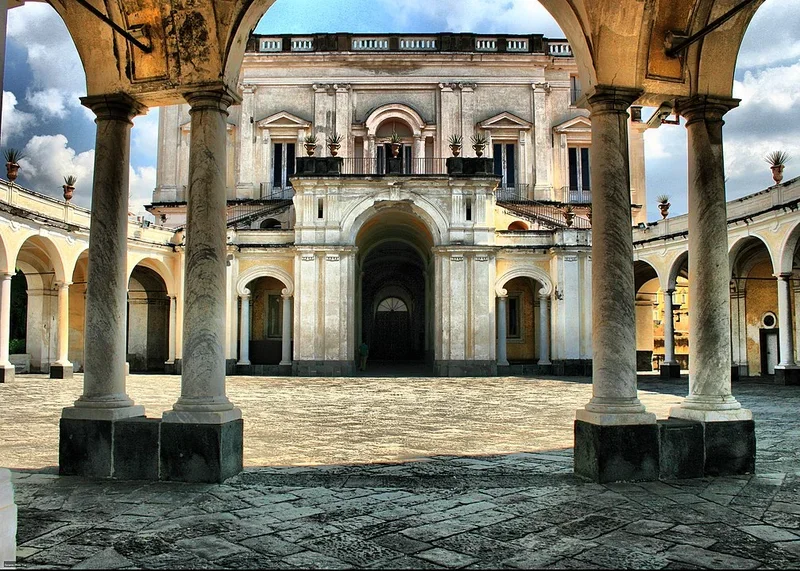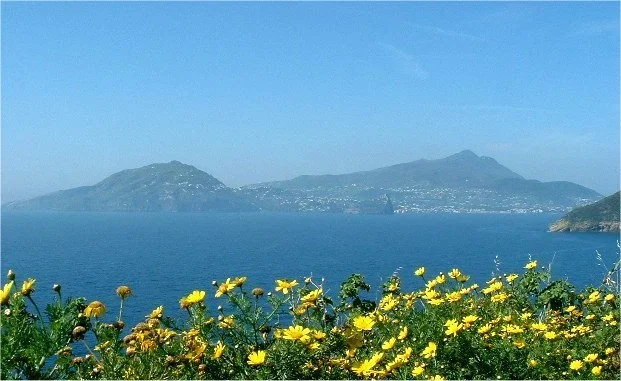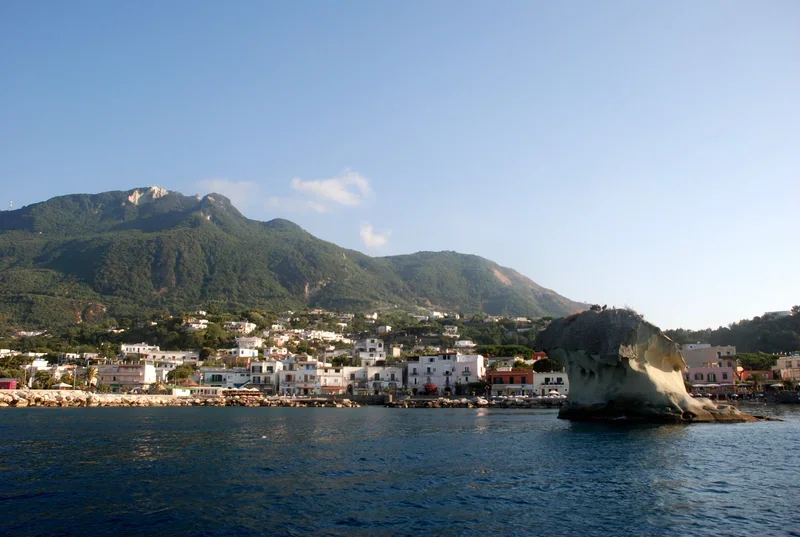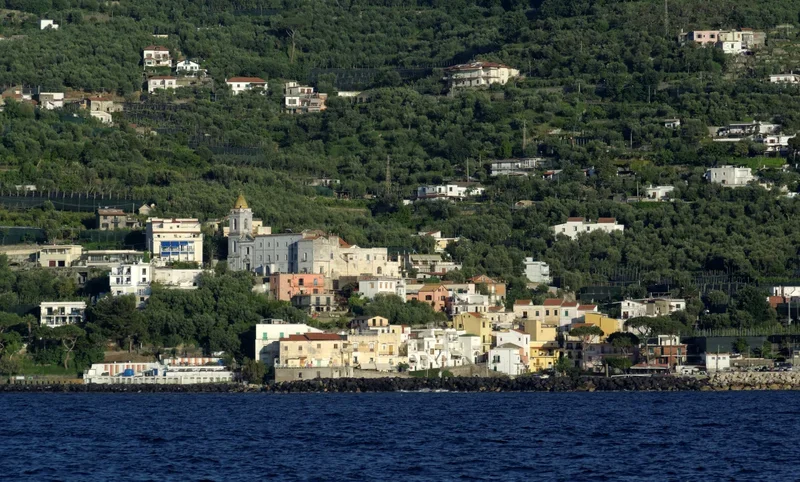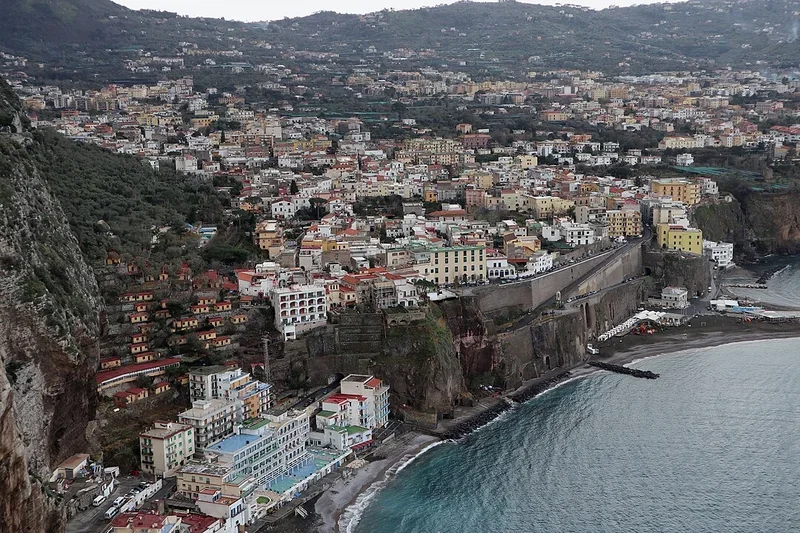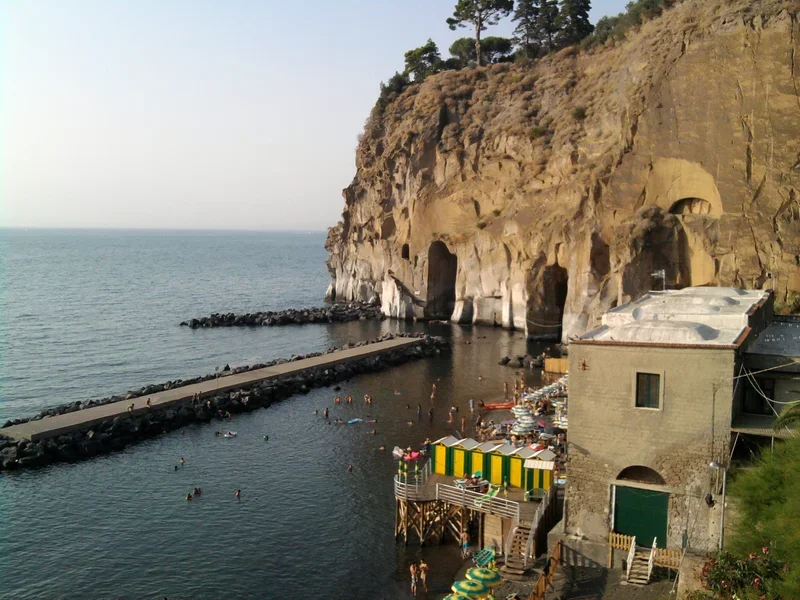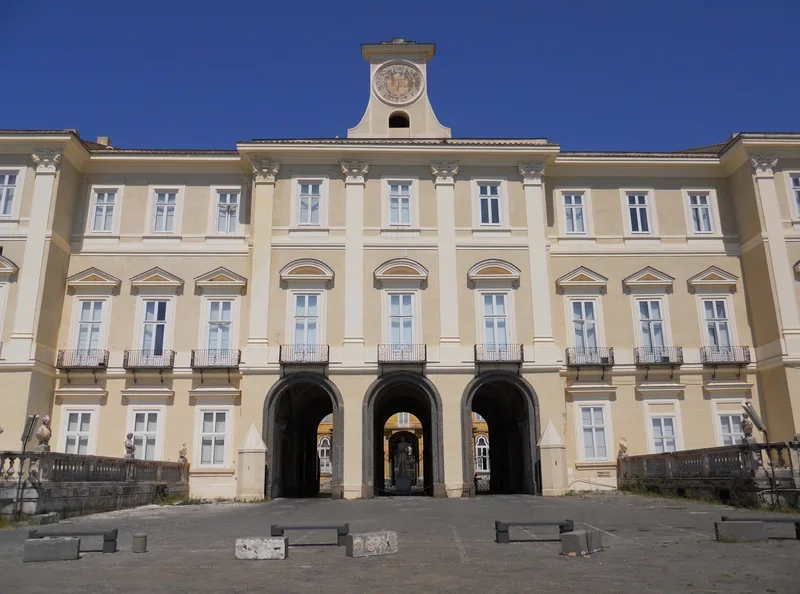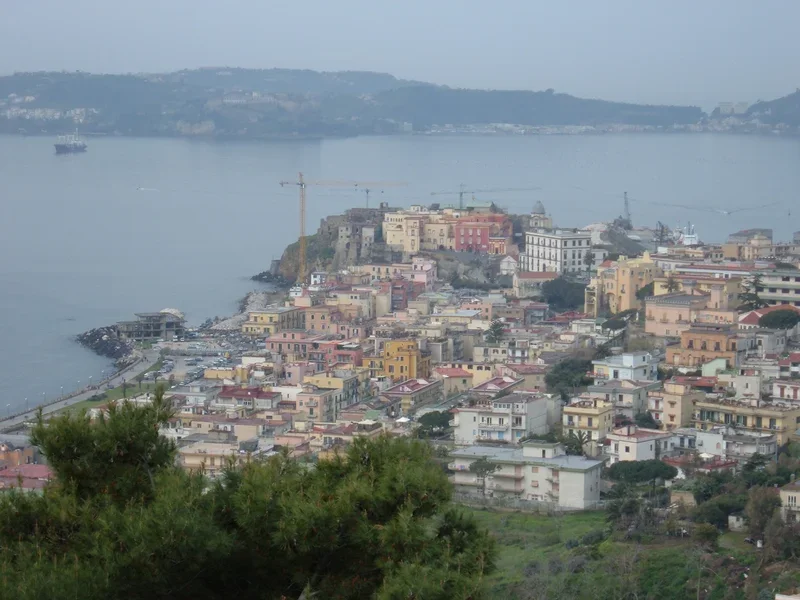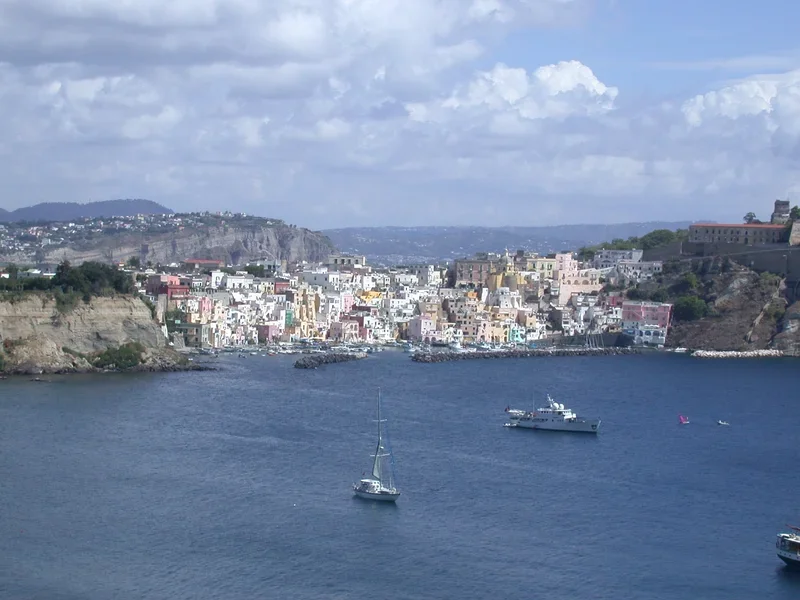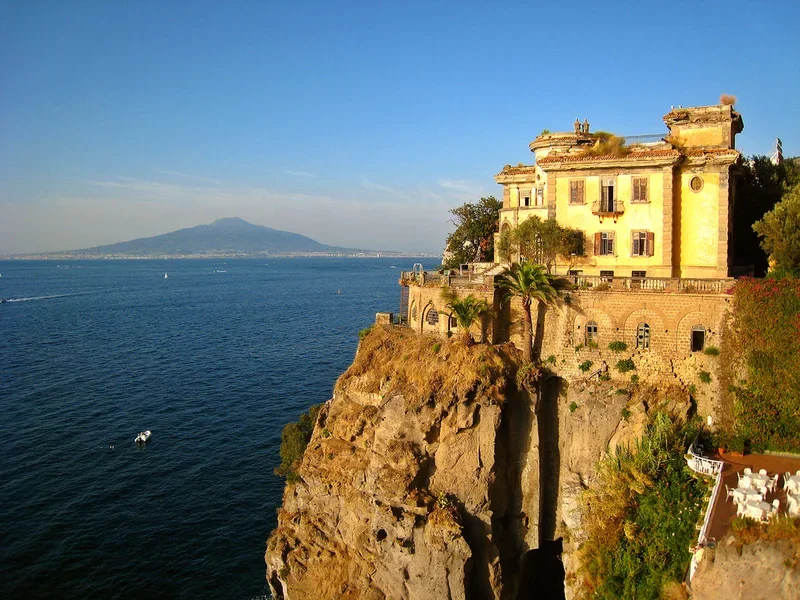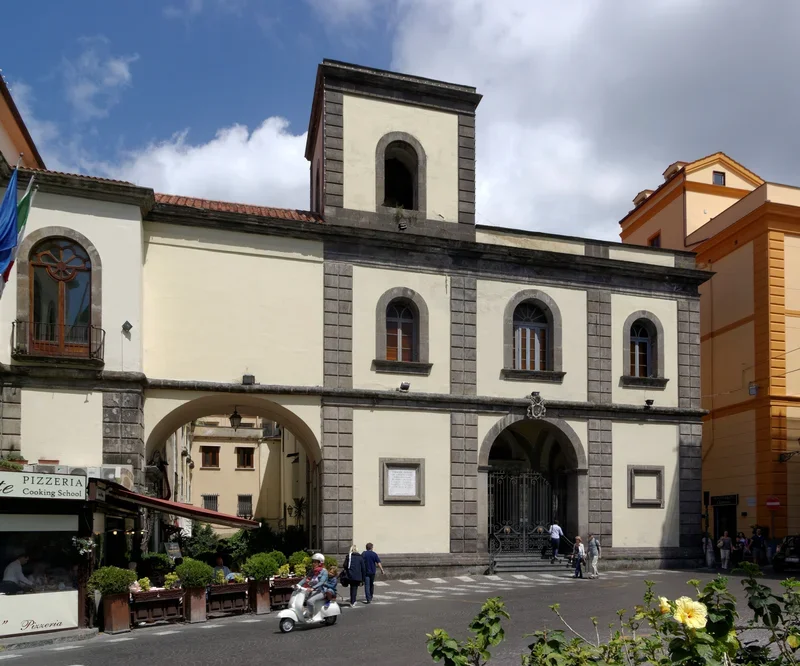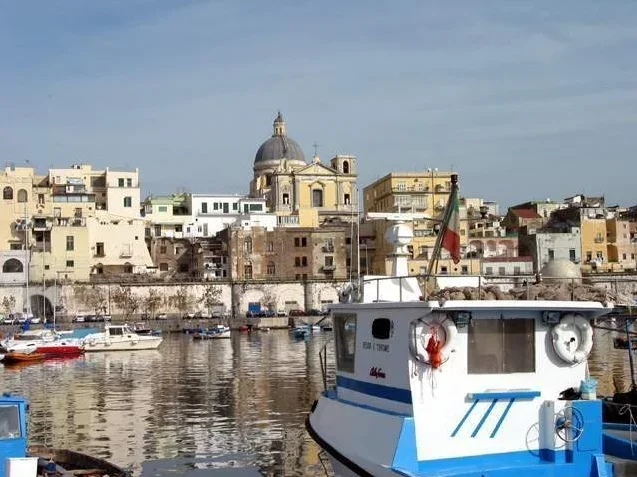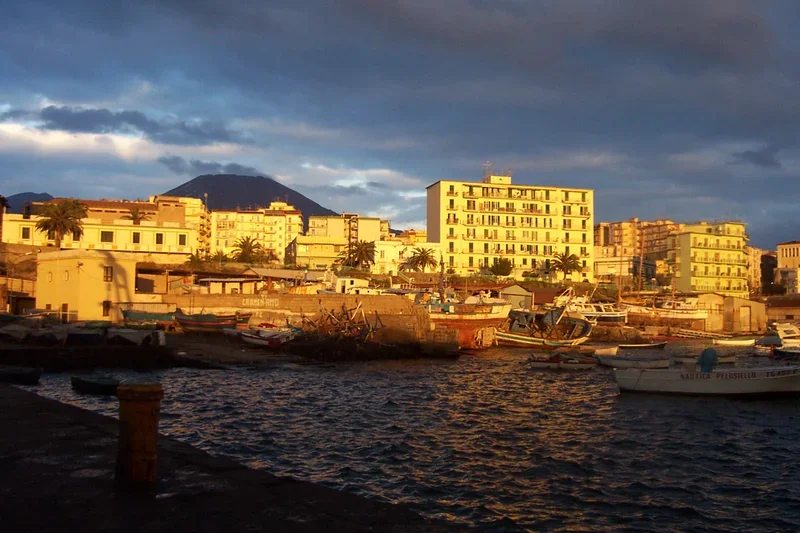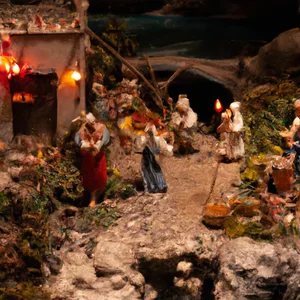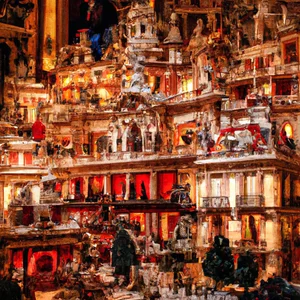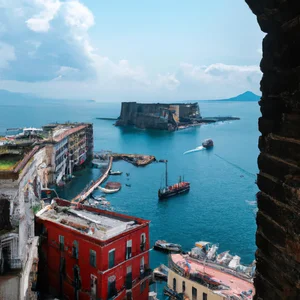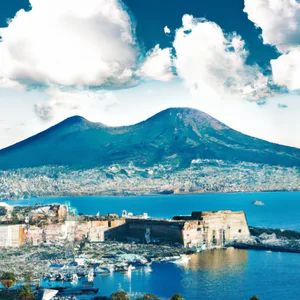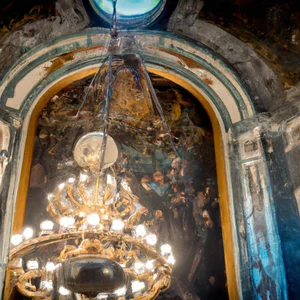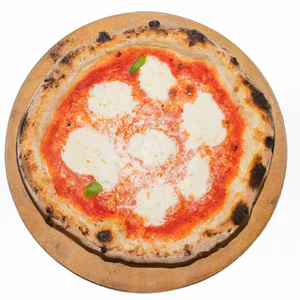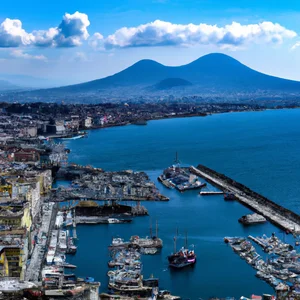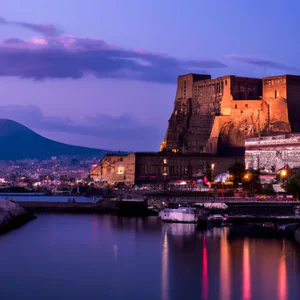Book your experience
Royal Palace of Naples
Located in the beating heart of Naples, the Royal Palace is a symbol of great historical and cultural importance, as well as one of the main tourist attractions of the city. Crossing its doors, visitors are immediately enveloped by the elegance and majesty of a place that has seen centuries of history pass by, from the Angevin period to the Bourbon era. Built in the 17th century, the palace witnessed crucial events and hosted numerous sovereigns, thus becoming a true treasure chest of memories and traditions.In this article, we will explore the Royal Palace of Naples in ten points that highlight its most fascinating features. We will start with its history, a journey through time that will lead us to discover the origins and transformations of this imposing building. Subsequently, we will focus on architecture and design, analyzing the styles and influences that have shaped its structure.We will not fail to explore the gardens and outdoor spaces, a corner of tranquility that offers an enchanting view of the historic center of the city. The Palace is also a place full of works of art and collections of great value, which deserve to be discovered carefully. The rooms and royal apartments, splendidly furnished, tell stories of daily life and court ceremonies.In addition, we will talk about events and demonstrations that animate the palace, as well as practical information on opening times, tickets and access methods. We will also find out how to get there and what activities and guided tours are available for tourists. Finally, we will conclude our journey with some curiosities and anecdotes that will make the visit to the Royal Palace of Naples even more fascinating. Get ready to embark on an unforgettable journey into the heart of Neapolitan history.
History of the Royal Palace of Naples
The Royal Palace of Naples is one of the most significant historic residences in the city, a symbol of the power and culture that have characterized the Kingdom of Naples over the centuries. Its construction began in 1600, at the behest of the viceroy Don Pedro de Toledo, and was designed by the architect Giovanni Antonio Medrano.
Initially conceived as a residence for the viceroy, the palace underwent numerous expansions and renovations over the years, especially under the reign of the Bourbons, who chose it as their official residence starting from 1734. During the reign of Charles of Bourbon, the Royal Palace became an important political and cultural center, hosting artists, writers and intellectuals of the time.
In 1860, with the unification of Italy, the palace lost its function as a royal residence, but continued to be an important place of representation. Today, the Royal Palace is part of the UNESCO World Heritage Site and hosts the Museum of Capodimonte and other cultural institutions.
The history of the Palace is marked by significant events, such as the revolution of 1799 which led to the temporary abolition of the monarchy and the Bourbon restoration. The palace also saw the presence of historical figures such as Napoleon Bonaparte, who stayed there during his rule.
Today, the Royal Palace is a place of great historical and tourist interest, where visitors can immerse themselves in the history and culture of Naples and its kingdom.
Architecture and Design of the Royal Palace of Naples
The Royal Palace of Naples is an extraordinary example of Baroque architecture, reflecting the grandeur and power of the Spanish monarchy in the 17th century. The construction of the palace began in 1600, under the direction of the architect Giovanni Antonio Medici, and continued with other important renovations over the centuries.
Architectural Style
The palace has a neoclassical and baroque style, with imposing facades and elaborate decorations. The main facade overlooks Piazza del Plebiscito, with a large portico supported by Doric columns. The architectural details, such as the balconies and portals, show particular attention to detail and symmetry.
Interior
Inside, the Royal Palace is characterized by richly decorated rooms, with frescoes, stuccos and period furniture. Among the most famous rooms is the Throne Room, which shows the magnificence of the monarchy through its golden furnishings and decorations. The interiors were designed to represent the power and sophistication of the royal family.
Gardens and Courtyards
The palace is surrounded by beautiful gardens, designed in Italian style, which offer an oasis of tranquility in the heart of the city. The internal courtyards, such as the Cortile d’Onore, feature elegant fountains and statues, contributing to the overall beauty of the architectural complex.
Cultural Influence
The Royal Palace has played a significant role in the history and culture of Naples. It hosted important historical and political events, becoming a symbol of the city’s power and history. Today, the palace is a place of attraction for tourists and scholars, who can admire its architectural beauty and discover its fascinating history.
Gardens and External Spaces
The Royal Palace of Naples is surrounded by beautiful gardens and outdoor spaces that offer a green refuge in the heart of the city. These gardens, known as the Royal Palace Gardens, were designed to reflect the elegance and grandeur of the architecture of the palace itself.
History of the Gardens
The gardens were created in the 17th century, coinciding with the construction of the palace. Originally conceived as Italian gardens, they have been renovated over the centuries, incorporating elements of the English garden and other landscape influences.
Main Features
The Gardens of the Royal Palace extend over an area of over 10,000 square metres and are characterized by:
- Tree-lined avenues: Paths lined with centuries-old trees that offer shade and tranquility.
- Fountains and Lakes: Aquatic elements that bring the landscape to life, with water features that enchant visitors.
- Seasonal blooms: Manicured flower beds that host a variety of plants and flowers that change with the seasons.
Functions of the Gardens
The gardens are not only a place of beauty, but also a space for cultural events and events. Throughout the year, they host concerts, exhibitions and recreational activities, making them an important gathering area for citizens and tourists.
Access and Visit
The public can access the gardens of the Royal Palace, which represent an excellent opportunity for a relaxing walk or a moment of reflection. Entrance is usually free, although it may be subject to specific regulations during particular events.
In summary, the Gardens of the Royal Palace of Naples represent a corner of peace and beauty, a perfect complement to the magnificence of the palace itself and an ideal place to immerse yourself in the history and culture of the city.
Works of Art and Collections
The Royal Palace of Naples is a true treasure chest of works of art and historical collections, which reflect the wealth and power of the sovereigns who lived there . Each room of the palace is decorated with frescoes, paintings and sculptures by renowned artists, creating an atmosphere of great luxury and refinement.
Painting Collections
Among the most significant works, you can admire the drawings and canvases of artists such as Caravaggio, Van Dyck and Ribera . These paintings not only adorn the walls, but also tell the story and culture of the period, offering an insight into the aristocratic life of the time.
Sculptures and Furnishings
The palace also houses a series of sculptures and fine furnishings, which date back to different historical eras. Among these, the Baroque style furniture stands out, enriched with inlays and gilding, which testifies to the elegance and taste of the Neapolitan nobles. There is also no shortage of art objects from different parts of Europe, the result of cultural and commercial exchanges.
Tapestries and Fabrics
Particularly fascinating are the tapestrys that decorate some rooms of the Palace. Made with refined techniques, these fabrics not only embellish the environments, but tell mythological and historical stories, making the spaces even more evocative.
Temporary Exhibitions
In addition to the permanent collections, the Royal Palace also hosts temporary exhibitions that highlight works by contemporary artists or specific themes related to the history of art. These exhibitions offer a unique opportunity to explore new interpretations and artistic visions, further enriching the visiting experience.
In summary, the Royal Palace of Naples is not only an important historical site, but also a vibrant cultural center, where art and history intertwine to offer visitors a fascinating journey into the past.
Royal Rooms and Apartments
The Royal Palace of Naples is an extraordinary example of architecture and history, and its royal rooms and apartments represent the heart of this majestic residence. Built in the 17th century, the palace has undergone numerous renovations and expansions, but many of the rooms still retain the charm and grandeur of the Bourbon era.
King’s Apartment
The King’s Apartment is characterized by sumptuous rooms, decorated with frescoes, gilded stuccos and period furniture. Among the most famous rooms is the King’s Bedroom, where you can admire the original furnishings and a series of works of art that tell the story of the life of the royal family. The Royal Library, with its rare and precious volumes, is another point of interest, where the culture and intellect of the monarchy can be perceived through the preserved texts.
Queen’s Apartment
The Queen’s Apartment, adjacent to the King’s, is equally fascinating. Here, the Hall of Mirrors stands out for its elegance and for the numerous mirrors that reflect the light, creating an enchanting atmosphere. The rooms are decorated with refined tapestries and works of art that celebrate the beauty and power of the queen. The Queen’s Cabinet is a place of intimacy, where private meetings and important discussions took place.
Representation Rooms
The representation rooms, such as the Throne Room, were used for official ceremonies and receptions. This impressive space is adorned with frescoes illustrating mythological and historical scenes, and the throne, located in the center of the room, symbolizes the authority of the monarchy. Other rooms, such as the Tapestry Room, host precious tapestries that tell stories of battles and conquests, paying homage to the history of the Bourbon dynasty.
Visit to the Royal Rooms
The royal rooms and apartments are open to the public and offer a unique experience to immerse yourself in the life of the nobility of the past. Visitors can explore these magnificent spaces, admire the architectural details and discover the history behind each work of art. Thanks to guided tours, it is possible to learn anecdotes and curiosities about the daily life of the royal family and the historical events that took place within these walls.
The Royal Palace of Naples is not only a site of historical interest, but a real journey through time that allows you to understand the grandeur of the Neapolitan monarchy through its rooms and royal apartments.
Events and Demonstrations
The Royal Palace of Naples is not only an important historical and architectural testimony, but also a lively cultural center that hosts a series of events and demonstrations throughout the year.
Concerts and Shows
The Royal Palace is often home to concerts and theatrical performances, which take place both in the internal rooms and in the external gardens. These events offer the opportunity to experience music and art in a unique historical context, helping to create a magical atmosphere.
Temporary Exhibitions
Regularly, the Palace hosts temporary exhibitions highlighting works of art, photographs and installations by contemporary artists. These exhibitions offer an interesting fusion between past and present, making the visit even more captivating.
Cultural and Educational Events
The Royal Palace also organizes cultural events and educational activities for schools and families. These programs are designed to bring visitors closer to history and art, with interactive workshops and thematic guided tours.
Holidays and Celebrations
During the holidays, the Royal Palace becomes the stage for special celebrations, such as Christmas concerts and Carnival-related events. These events are an opportunity to discover how Neapolitan history and culture are intertwined with local traditions.
Accessibility to Events
The events are generally open to the public, but it is advisable to book in advance to attend particularly popular shows. Detailed information on scheduled events can be found on the official website of the Royal Palace or at the public information office.
Opening Times and Tickets
Opening Hours
The Royal Palace of Naples is open to the public at the following times:
- Monday to Sunday: 9:00 - 20:00
- Last entry: 7.00pm
- Closed: January 1st, August 15th and December 25th
Tickets
Tickets for entry to the Royal Palace can be purchased at the ticket office located at the main entrance. Prices are as follows:
- Full price: €12
- Reduced: €6 (applicable to young people between 18 and 25 years old, groups of at least 15 people and citizens over 65)
- Free: for children under 18, teachers and journalists with a card, and other specific categories
Online Purchase
It is also possible to purchase tickets online through the official website of the Royal Palace, thus avoiding long waits in queues. It is advisable to book in advance, especially during periods of high tourist influx.
Guided Tours
Guided tours are available upon reservation and can be an excellent opportunity to learn more about the history and architecture of the Palace. The costs of guided tours vary depending on the type of tour and the number of participants.
How to get to the Royal Palace of Naples
By Car
If you are traveling by car, the Royal Palace is easily reachable. There are several parking areas nearby, but we advise you to check parking availability in advance, as they may be limited, especially at weekends and during peak tourist periods.
By Public Transport
The Royal Palace is well connected to Naples’ public transport. You can take:
- Metro: The closest stop is Municipio (Line 1), a few steps from the building.
- Bus: Several bus lines stop nearby, including the 151, 54, and C21 lines >.
- Tram: Tram line 1 will take you close to the city center.
On Foot
If you are in the historic center of Naples, the Royal Palace is easily reachable on foot. The walk will allow you to admire the beauties of the city, such as Piazza del Plebiscito and the San Carlo Theatre.
By bike
If you prefer to travel by bicycle, Naples has some cycle paths. There are also bike sharing services you can use to reach the Royal Palace. Remember to pay attention to traffic, which can be heavy in some areas.
Taxi and Ride Sharing
Alternatively, you can use a taxi or ride sharing services such as Uber or Lyft, which are available in the city and can take you directly to the Royal Palace.
Activities and Guided Tours
The Royal Palace of Naples offers a variety of activities and guided tours for tourists and history enthusiasts. Visits can be carried out in different ways, allowing visitors to explore the magnificence of the palace in depth.
Guided Tours
The guided tours are conducted by expert art historians and qualified tourist guides, who provide detailed information on the history, architecture and works of art present in the palace. These visits can be booked in advance and are available in several languages.
Autonomous Visits
For those who prefer to explore the palace independently, audio guides are available which offer an overview of the main rooms and works of art, enriching the visiting experience with historical and artistic information. p>
Educational Activities
The Royal Palace also organizes educational activities for schools and groups, with workshops and educational courses that aim to involve participants in the history and culture of the place. These activities are designed to stimulate the interest and curiosity of visitors, especially younger visitors.
Special Events
During the year, the Royal Palace hosts special events, such as concerts, temporary exhibitions and historical re-enactments. These events offer a unique opportunity to experience the palace in a different context and to appreciate its beauties in an innovative way.
Practical information
It is advisable to check the official website of the Royal Palace of Naples for updated information on timetables, availability of guided tours and any scheduled events. Booking in advance is always a good idea, especially during periods of high tourist influx.
Curiosities and Anecdotes
The Royal Palace of Naples, one of the most iconic symbols of the city, is full of curiosities and fascinating anecdotes that enrich its history and importance.
The Phantom of the Palace
A well-known anecdote concerns the alleged ghost of Donna Maria Cristina of Savoy, queen consort of Ferdinand II of Bourbon. It is said that her spirit still wanders the rooms of the palace, particularly in the corridors and rooms adjacent to her chamber, where she was often spotted by visitors and caretakers.
The Palace and the Cinema
The Royal Palace has also been a film set for several films. In particular, it was used for the filming of “The Talented Mr. Ripley” and “The Pacifista”, demonstrating its versatility and architectural beauty. The majesty of the rooms and the decorative richness have attracted world-famous directors.
The Myth of the Palace Fountain
Within the Palace gardens there is a splendid fountain which, according to legend, was built to commemorate a historic naval victory. It is said that whoever drinks the water from the fountain will have luck in love and prosperity. This myth attracts many visitors, who do not miss the opportunity to get closer and make a wish.
The Secret of the Ladder of Honor
Another curiosity concerns the Scala d’Onore, which leads to the royal rooms. It is decorated with magnificent frescoes and elaborate stuccoes. It is said that during official ceremonies, members of the royal family descended this staircase to appear to the public, creating a moment of great drama and grandeur.
The Palace and the Music
The Royal Palace has hosted many musical events and concerts over the years. An interesting anecdote is that the famous composer Wolfgang Amadeus Mozart is said to have performed a concert in one of the rooms of the palace during his stay in Naples in 1770.
These anecdotes and curiosities not only enrich the history of the Royal Palace of Naples, but also offer a fascinating glimpse into the life that once took place within these walls, making the visit even more engaging and evocative.

